Chefchaouen, often called the “Blue City” or “Blue Pearl,” is a magical place in northern Morocco. Nestled in the Rif Mountains, its streets are painted in shades of blue, creating a unique atmosphere that draws visitors from all over the world. This small town, also known as Chaouen, is famous for its calm, laid-back vibe, making it an ideal destination for travelers looking to escape the busier Moroccan cities like Fez and Marrakesh.
Founded in the 15th century, Chefchaouen has a rich history. It was once a refuge for Jewish and Muslim refugees fleeing Spain. The town’s unique blend of cultures can still be seen in its architecture, narrow streets, and local traditions. Whether you’re wandering through its old medina or sipping Moroccan mint tea on a rooftop terrace, Chefchaouen offers an unforgettable experience.
From its vibrant local life to the stunning panoramic views of the surrounding mountains, Chefchaouen is a place that will leave a lasting impression. As we explore how to get to this charming town, you’ll discover the best ways to start your journey to the heart of the blue-washed streets.
How to Get to Chefchaouen
Reaching Chefchaouen, located in the Rif Mountains, requires some planning, as the town itself doesn’t have an airport or train station. However, it is well-connected by road to various major cities in Morocco, making it accessible for both international and domestic travelers. Here’s how to get there depending on where you are starting your journey.
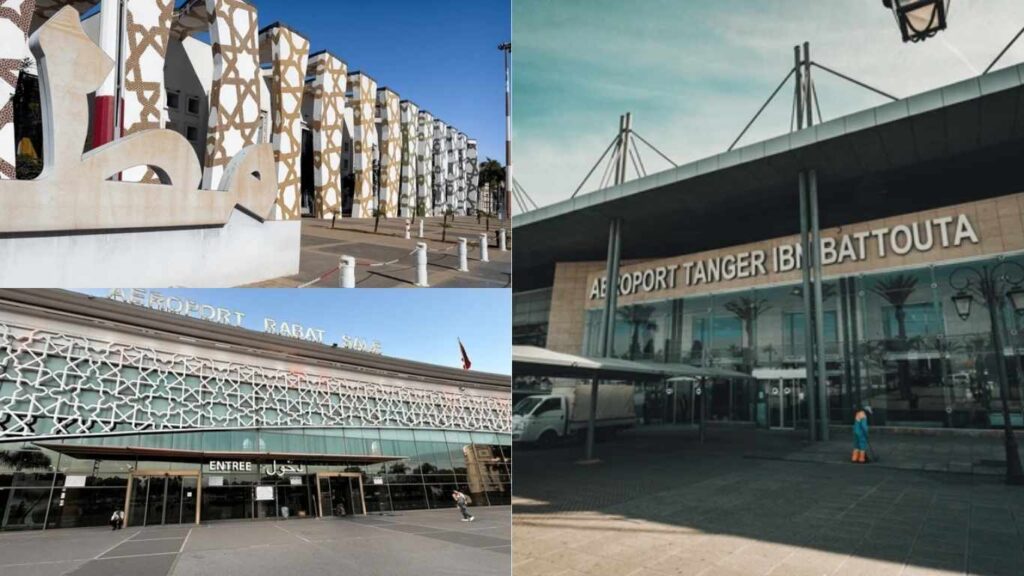
International Travel Options
For international travelers, the journey to Chefchaouen typically starts at one of Morocco’s larger airports, followed by a road trip. The closest major airports are in Tangier, Fez, and Rabat. Here’s a breakdown of each:
Tangier Ibn Battuta Airport: This is the most convenient airport for reaching Chefchaouen. It’s located about 120 kilometers (75 miles) away, roughly a 2-hour drive. Tangier is a major hub for international flights, particularly from European cities. It is also connected to a few North American destinations.
Fez Sais Airport: Located about 200 kilometers (125 miles) from Chefchaouen, Fez’s airport is another option, though the drive is longer, taking about 4 hours. Fez is well-connected to many European cities and offers frequent flights. Fez is also an excellent starting point if you plan to visit both Fez and Chefchaouen during your trip.
Rabat-Salé Airport: Rabat’s airport is located about 250 kilometers (155 miles) from Chefchaouen. The drive from Rabat takes approximately 5 hours. Though Rabat isn’t as popular with tourists as Marrakech or Fez, its airport serves several international destinations, mainly from Europe.
Tips for International Travelers:
Direct flights to Tangier are the most convenient: Tangier’s airport is closest to Chefchaouen, and it’s well-connected to Europe.
Transportation from airports: Plan your route from the airport ahead of time, as public transportation may not always be available late at night.
Consider private transfers: If you prefer a hassle-free journey, private taxis or transfers can take you directly from the airport to Chefchaouen, though this will be more expensive than public transportation.
Domestic Travel to Chefchaouen
Once you’ve arrived in Morocco, traveling to Chefchaouen is straightforward, but it involves navigating Morocco’s roadways. Chefchaouen is well-connected to nearby cities like Tangier, Fez, Tetouan, and Casablanca by bus, taxi, or car.
By Bus:
The most common way to reach Chefchaouen is by bus. CTM and other local bus companies operate regular services between Chefchaouen and cities such as Tangier, Fez, and Casablanca. The buses are comfortable, air-conditioned, and reasonably priced. However, the journey can be slow, especially on the winding roads through the mountains.
From Tangier: Buses take around 2-3 hours to reach Chefchaouen, with multiple departures daily.
From Fez: The bus journey from Fez takes about 4-5 hours.
From Casablanca: Expect a long trip of 7-8 hours from Casablanca, usually with a change in Tetouan or Tangier.
Pros of Bus Travel:
- Affordable
- Air-conditioned and comfortable
- Frequent schedules from major cities
Cons of Bus Travel:
- Slower than taxis or private transport
- May experience delays due to road conditions
By Taxi:
For faster travel, grand taxis (shared or private taxis) are available from nearby cities. These taxis are generally quicker than buses and can be shared with other passengers to reduce the cost. A private taxi can be a more comfortable option if you’re traveling with luggage or prefer privacy.
From Tangier: Grand taxis take about 2 hours, and the cost is higher than buses but more flexible in terms of schedule.
From Tetouan: Grand taxis from Tetouan offer a quick 1-hour journey.
Pros of Taxi Travel:
- Faster than bus travel
- Flexible schedule (no need to wait for specific bus times)
- Can be shared to reduce costs
Cons of Taxi Travel:
- More expensive, especially if taken privately
- May not be as comfortable as buses, especially if shared with others
Renting a Car:
Renting a car gives you the freedom to explore Chefchaouen and its surroundings at your own pace. Driving from Tangier to Chefchaouen takes about 2 hours while driving from Fez takes about 4 hours. The drive is scenic, particularly as you approach Chefchaouen and the Rif Mountains. However, keep in mind that some roads can be narrow and winding, especially in the mountains.
Tips for Renting a Car:
Check road conditions: Some mountain roads can be challenging, especially in winter.
Rent a GPS or use offline maps: Some areas may not have reliable mobile service, so having a reliable map is essential.
Parking in Chefchaouen: The medina is pedestrian-only, so you’ll need to park outside and walk in. Paid parking is available near the main entrances to the medina.
Pros of Renting a Car:
- Complete freedom to explore at your own pace
- Ideal for making stops along the way and taking scenic routes
Cons of Renting a Car:
- Mountain roads can be tricky for inexperienced drivers
- Parking in Chefchaouen is limited to areas outside the medina
Guided Tours:
Many travelers opt for guided tours that include transportation to Chefchaouen as part of a larger Morocco itinerary. These tours often depart from Tangier, Fez, or even Marrakech, and include transport in air-conditioned minibusses or vans. Some tours include stops at attractions along the way, providing a more enriching travel experience.
Pros of Guided Tours:
- No need to worry about planning transportation
- Often include additional sights and experiences
- Guided tours offer insights into the region’s history and culture
Cons of Guided Tours:
- Less flexibility in terms of schedule
- Can be more expensive than public transportation
Key Travel Considerations for Getting to Chefchaouen
Time of Arrival: Depending on where you’re coming from, plan your arrival carefully. Bus and taxi services are more frequent during the day. If you’re arriving late at night, consider booking a private transfer or renting a car to avoid long waits.
Weather Conditions: If you’re traveling in winter, check weather conditions beforehand. Roads in the Rif Mountains can become slippery and difficult to navigate during the colder months.
Comfort vs. Cost: While buses are the most budget-friendly option, taxis and car rentals offer more comfort and flexibility. Private tours are the most convenient but come at a higher price.
By considering your preferences, budget, and the amount of time you have, you can choose the best option for your journey to Chefchaouen. No matter how you get there, the beautiful blue-washed streets and surrounding mountains are well worth the trip!
Best Time to Visit Chefchaouen
The best time to visit Chefchaouen largely depends on the type of experience you’re seeking. Different seasons offer unique opportunities for exploring this enchanting town, and the weather can vary significantly throughout the year. Here’s a breakdown of what each season offers:
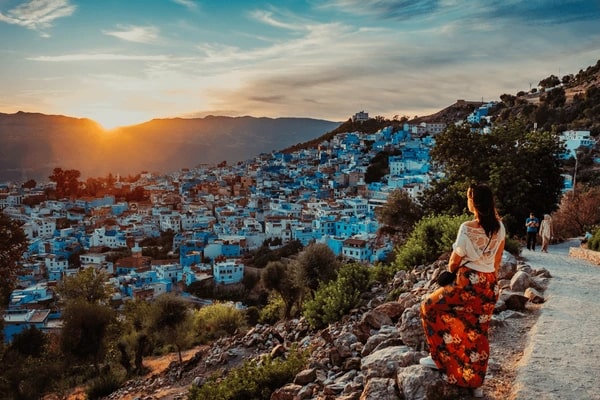
Spring (March to May)
Spring is one of the best times to visit Chefchaouen. The weather during this period is mild and pleasant, with daytime temperatures typically ranging between 15°C and 25°C (59°F to 77°F). The mountains surrounding the town come alive with greenery, making this an ideal time for hiking and enjoying the natural beauty of the region.
Key Advantages:
- Mild, comfortable temperatures.
- Lush green landscapes are perfect for nature lovers.
- Fewer tourists than during the summer, providing a quieter experience.
- Great for exploring both the medina and outdoor activities, like hiking.
Spring is often a time for local festivals, where you can experience traditional Moroccan music, food, and culture. Although Chefchaouen doesn’t host many large-scale events, neighboring cities often do.
Summer (June to August)
Summer is the peak tourist season in Chefchaouen, especially with visitors from Europe looking for a cool escape from the heat of southern Morocco. While Chefchaouen is cooler than cities like Marrakech and Fez due to its mountainous location, temperatures can still reach over 30°C (86°F) during the day. The evenings, however, are pleasantly cooler.
Key Advantages:
- The town is lively with tourists, making it easier to join group tours and find open restaurants or shops.
- Chefchaouen’s higher elevation makes it cooler than the rest of Morocco, offering a more comfortable summer escape.
Fall (September to November)
Fall is another ideal time to visit Chefchaouen. Much like spring, the weather is mild, with temperatures typically ranging from 15°C to 25°C (59°F to 77°F). As the summer crowds start to thin out, you’ll find a more peaceful atmosphere while still enjoying pleasant weather.
Key Advantages:
- Comfortable temperatures, perfect for hiking and outdoor activities.
- Fewer tourists than in summer, allowing for a more relaxed experience.
- The surrounding landscape begins to change colors, adding a unique beauty to the area.
Fall is a great time for leisurely walks through the medina, as well as longer hikes in the Rif Mountains. The cooler temperatures make it ideal for exploring both the town and the natural surroundings.
Winter (December to February)
Winter in Chefchaouen is the quietest season, with fewer tourists and cooler temperatures. Daytime temperatures range from 10°C to 15°C (50°F to 59°F), but it can get much colder at night, especially in the mountains. While snow is rare in Chefchaouen itself, the nearby Rif Mountains may receive snow, making it a unique time to visit if you’re interested in seeing the town with a different backdrop.
Key Advantages:
- Quiet and peaceful with very few tourists, allowing for an authentic and relaxed experience.
- Cheaper accommodation and fewer crowds make it easier to explore the town at your own pace.
This is a great time to visit if you want to see Chefchaouen in its quietest form, with an opportunity to enjoy its peaceful atmosphere without the usual tourist rush. Winter offers some breathtaking mountain views, especially if there is snow on the peaks of the Rif Mountains.
Ideal Time Based on Activities
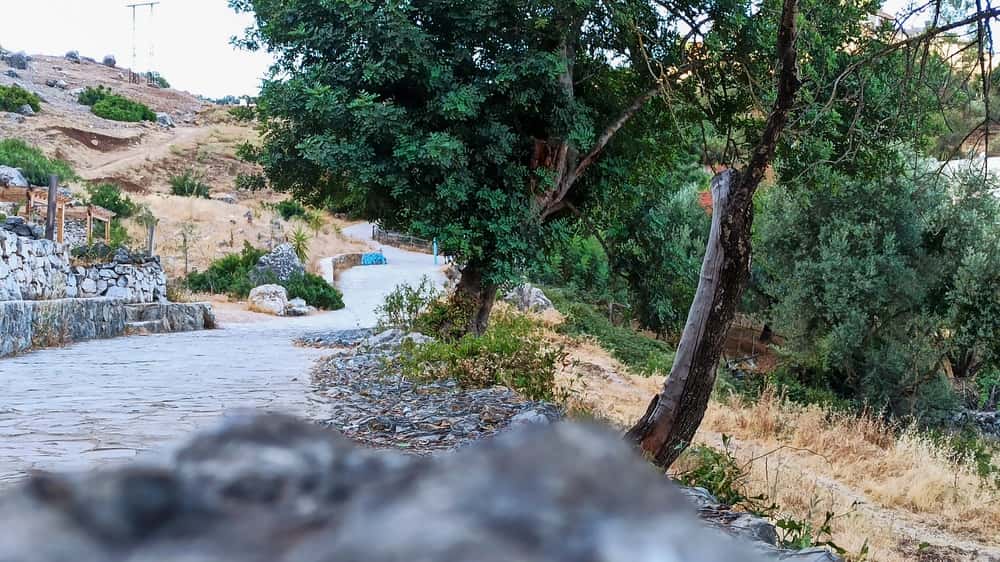
Hiking and Nature:
Spring and fall are the best seasons for hiking, as the weather is mild and the landscape is either lush (spring) or colorful (fall). These seasons also provide the best conditions for exploring the nearby mountains and enjoying outdoor activities.
Cultural Exploration:
Summer is ideal if you want to experience Chefchaouen when it’s most lively, with a vibrant atmosphere in the medina and plenty of opportunities to meet other travelers. However, fall and spring are quieter times for exploring the culture and interacting with locals without the crowds.
Budget Travelers:
Winter offers the best prices on accommodations, and you’ll have the town mostly to yourself. However, be prepared for cooler temperatures and a more limited range of open restaurants and shops.
My Thoughts on the Best Time to Visit
Best Overall: Spring (March to May) and Fall (September to November) for the most comfortable weather and fewer tourists.
For a Lively Experience: Summer (June to August) if you enjoy a bustling atmosphere and don’t mind the heat.
For a Quiet and Budget-Friendly Trip: Winter (December to February) for those who prefer a more peaceful stay and lower prices, though it will be cooler.
Where to Stay in Chefchaouen
When visiting Chefchaouen, choosing the right place to stay can significantly enhance your experience. Whether you’re looking for a traditional Moroccan riad, a modern hotel, or a budget-friendly guesthouse, Chefchaouen offers a variety of accommodations to fit your needs. Each option provides a unique glimpse into the town’s culture, style, and atmosphere.
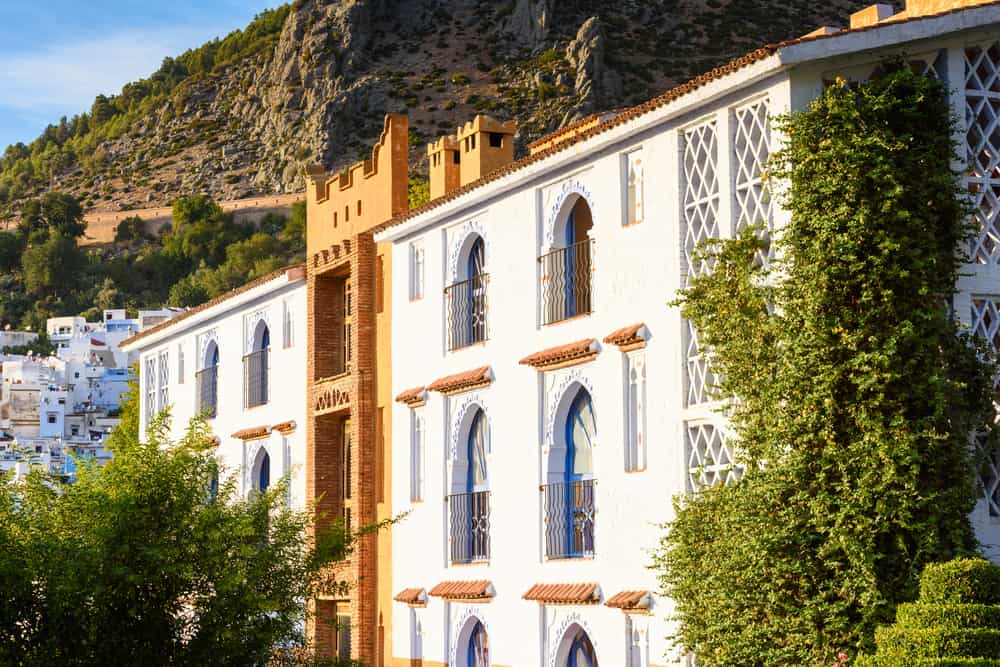
Hotels and Riads
Staying in a traditional Moroccan riad is one of the most popular choices in Chefchaouen. A riad is a type of guesthouse typically centered around a beautiful interior courtyard or garden. These small, family-run establishments often feature intricate tile work, traditional Moroccan decor, and rooftop terraces with stunning views of the medina or surrounding mountains. Many riads in Chefchaouen also offer excellent hospitality, personalized service, and home-cooked meals.
Boutique Riads:
Chefchaouen is known for its boutique riads, which combine traditional Moroccan architecture with modern comforts. Many of these riads are located within the old medina, making it easy to explore the town on foot. These riads typically offer a cozy, intimate experience and are ideal for travelers who want to immerse themselves in Moroccan culture.
Features:
- Traditional Moroccan design and decor.
- Rooftop terraces with panoramic views of the blue-washed streets.
- Homemade Moroccan meals, including tagines and fresh mint tea.
Budget Riads:
If you’re traveling on a budget, there are several riads that offer affordable yet comfortable accommodations. These budget-friendly riads often provide the same authentic experience but with simpler amenities.
Features:
- Comfortable rooms with basic amenities.
- A more laid-back, homely atmosphere.
- Affordable rates while still offering an authentic Moroccan experience.
Luxury Riads:
For those seeking a more luxurious stay, Chefchaouen also has upscale riads that provide premium amenities such as spa services, private terraces, and gourmet dining. These riads often cater to travelers looking for a more exclusive, high-end experience.
Features:
- Spacious rooms with modern comforts such as air conditioning, private bathrooms, and Wi-Fi.
- Spa services and wellness treatments.
- Fine dining options with both Moroccan and international cuisines.
Airbnb and Guesthouses
For travelers who prefer a more intimate or home-like experience, Airbnb and local guesthouses are excellent choices. These accommodations often allow visitors to stay in local homes, offering a closer look at daily life in Chefchaouen. Guesthouses are often family-run, providing a warm and welcoming atmosphere.
Airbnb Options:
Airbnb rentals in Chefchaouen range from private rooms in local homes to entire apartments. Staying with a local family can give you insights into Moroccan customs and traditions, while renting a private apartment offers more privacy and space.
Pros:
- Affordable options for travelers on a budget.
- Great for longer stays or larger groups.
- Many properties are located in or near the medina, allowing easy access to attractions.
Cons:
- May lack some of the services and amenities provided by hotels and riads, such as housekeeping or meals.
Guesthouses:
Local guesthouses provide a similar experience to Airbnb, often with the added benefit of interacting with the owners, who are usually happy to share their knowledge of the town. Many guesthouses also serve traditional Moroccan breakfasts, offering a taste of local cuisine right at your doorstep.
Pros:
- Warm, homely atmosphere with personal touches.
- Lower cost compared to hotels or luxury riads.
- Owners often provide useful tips for exploring Chefchaouen.
Cons:
- Some guesthouses may have more basic amenities compared to larger hotels or riads.
- Limited privacy in shared accommodations.
Modern Hotels
While traditional riads and guesthouses are the most popular options in Chefchaouen, there are also modern hotels available for travelers who prefer a more familiar setting. These hotels often offer standard amenities such as Wi-Fi, room service, and air conditioning, making them a more comfortable choice for visitors who prioritize convenience.
Boutique Hotels:
Some of Chefchaouen’s boutique hotels combine the charm of a riad with the modern amenities of a hotel. These hotels often feature stylish interiors, comfortable rooms, and a more contemporary design while maintaining some traditional Moroccan touches.
Features:
- Comfortable, well-appointed rooms.
- Modern facilities like on-site restaurants and Wi-Fi.
- Located in or near the medina, offering easy access to key attractions.
Larger Hotels:
Larger hotels, though fewer in number, provide the comfort and convenience of international-standard accommodations. These hotels are ideal for travelers who prefer a familiar hotel experience with additional amenities such as pools, fitness centers, and concierge services.
Features:
- Standardized amenities and services.
- On-site restaurants and entertainment options.
- Suitable for families and groups who need more space and convenience.
Exploring Chefchaouen
Chefchaouen is more than just a beautiful backdrop for photos—it’s a town full of hidden gems waiting to be discovered. From engaging with the friendly locals to uncovering the natural beauty that surrounds the town, there are many ways to explore Chefchaouen beyond its famous blue streets.
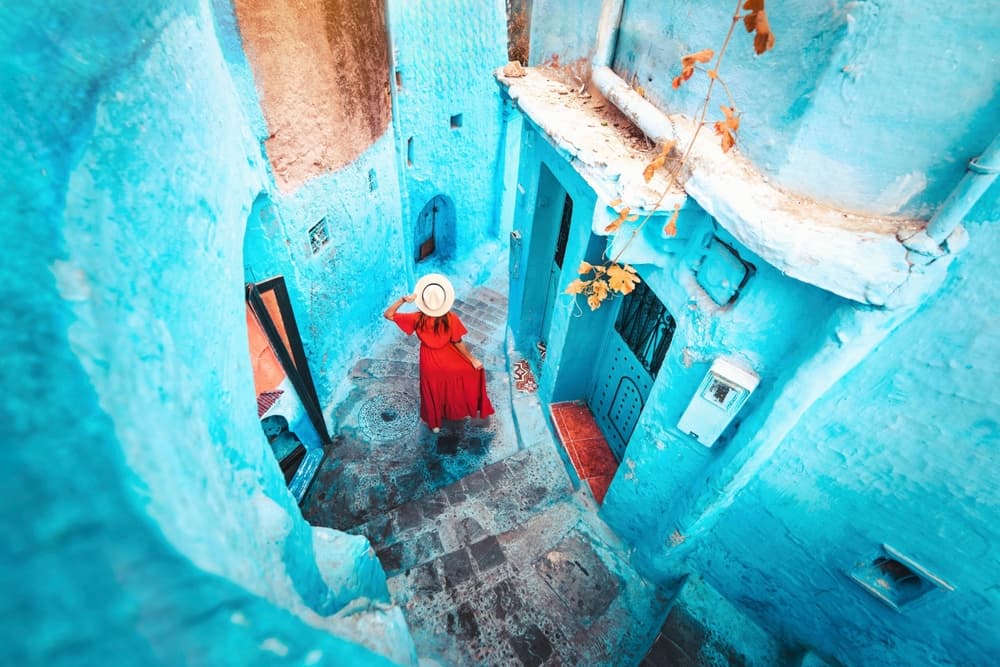
A Walking Tour of the Blue City
Exploring the Medina’s Hidden Corners: While the main attractions of the medina are well-known, many lesser-known spots add to the charm of the town. Wandering through the quieter streets can lead you to unexpected discoveries, such as tiny workshops where artisans handcraft goods or tranquil courtyards where locals gather.
Off-the-Beaten-Path Streets: As you walk away from the busy central areas, you’ll find more peaceful streets where daily life unfolds. These quieter corners are perfect for slowing down and soaking in the atmosphere. You may encounter artists painting the famous blue walls or locals selling small crafts.
Local Artisan Workshops: Tucked into small side streets, you’ll find artisan workshops that specialize in everything from pottery to weaving. These shops often allow visitors to watch artisans at work, giving you a deeper connection to the craftsmanship that makes Chefchaouen unique.
Local Culture and Traditions
Engage with Local Life: One of the most rewarding aspects of exploring Chefchaouen is getting to know its people. The town is known for its hospitality, and locals are often happy to share stories, offer tea, or invite you to learn more about their culture.
Daily Life in Chefchaouen: Early morning is the best time to observe the locals starting their day. From shopkeepers setting up their stalls to bakers pulling fresh bread from their ovens, Chefchaouen comes alive in the morning with calm and peaceful energy.
Local Markets (Souks): Beyond the medina’s permanent shops, Chefchaouen also hosts weekly markets, where locals from nearby villages come to sell produce, spices, and handmade goods. Visiting these markets is an excellent way to interact with local residents and experience an authentic part of daily life. The souk is typically busiest in the morning, so plan your visit early to see the most activity.
Nature Beyond the Town
While the blue-washed streets are the main draw of Chefchaouen, the surrounding nature offers plenty of opportunities for exploration and relaxation. Just outside the medina, nature takes over with lush hills, rivers, and waterfalls. These areas provide a peaceful contrast to the hustle of the town.
Ras El-Ma Spring: One of the most tranquil places just outside the medina is Ras El-Ma, where cool mountain water flows into the town. This natural spring is a great spot to take a refreshing break after wandering the medina. Locals often gather here to relax, making it a wonderful place to observe the community while enjoying the peaceful surroundings.
Exploring Surrounding Villages: Beyond Chefchaouen itself, there are many small Berber villages scattered in the surrounding hills. If you’re up for a more adventurous exploration, consider visiting one of these villages to learn more about rural life in the Rif Mountains. Many of these villages maintain traditional practices that haven’t changed for centuries.
Rooftop Dining and Scenic Views
One of the best ways to explore Chefchaouen is from above. The town is filled with rooftop cafés and restaurants that offer breathtaking views of the medina and surrounding mountains. Whether you’re having breakfast or sipping tea at sunset, these vantage points allow you to appreciate Chefchaouen’s beauty from a different perspective.
Rooftop Cafés: Many of the town’s restaurants and cafés feature rooftop terraces. From these elevated spots, you can enjoy panoramic views while sampling local dishes. Rooftop terraces are especially popular at sunset, when the sky lights up with brilliant colors, providing a magical backdrop to the blue city below.
Perfect Sunset Spots: Aside from the Spanish Mosque hike, some of the best views at sunset can be found on the rooftops of hotels or riads. These spots offer a quiet escape from the busy streets, allowing you to unwind while watching the town transform in the golden light.
Artistic Exploration: Photography and Painting
Chefchaouen has long attracted artists, photographers, and painters due to its unique beauty. Exploring the town’s artistic side can be as rewarding as visiting its landmarks.
Street Artists and Galleries: You’ll often encounter street artists creating works of art inspired by Chefchaouen’s blue hues and unique light. Local galleries showcase traditional Moroccan art, photography, and more modern interpretations of life in the Rif Mountains. Some artists will invite you to observe them at work, adding a creative touch to your visit.
Photography Tours: If you’re a photography enthusiast, Chefchaouen is a paradise. Consider joining a photography tour, where local guides take you to the most photogenic spots while teaching you how to capture the city’s beauty. These tours can help you see the town in a new light and ensure you don’t miss any of its iconic photo opportunities.
Spiritual Exploration
For those interested in spirituality or seeking a peaceful retreat, Chefchaouen’s calm and serene environment makes it a perfect place for meditation, reflection, and relaxation. The town’s slower pace of life and connection to nature create an atmosphere conducive to quiet contemplation.
Quiet Spots for Reflection: Some of the lesser-visited areas of the medina, as well as nearby natural spots like Ras El-Ma, offer tranquil environments for meditation or quiet reflection. The soft blue tones of the town, combined with the fresh mountain air, create a relaxing backdrop for those seeking a more spiritual experience.
Learning About Sufi Traditions: Chefchaouen has a rich history tied to Sufi traditions. While the town is not as well-known for its religious significance as other parts of Morocco, some visitors may be interested in learning more about local Sufi practices, which emphasize spirituality and mysticism.
Top Things to Do in Chefchaouen
Chefchaouen is full of activities and experiences that highlight the natural beauty and culture of the area. From hiking the stunning Rif Mountains to exploring the colorful medina, this town offers a mix of adventure, history, and traditional Moroccan charm. Here are some of the top things to do when you visit Chefchaouen.
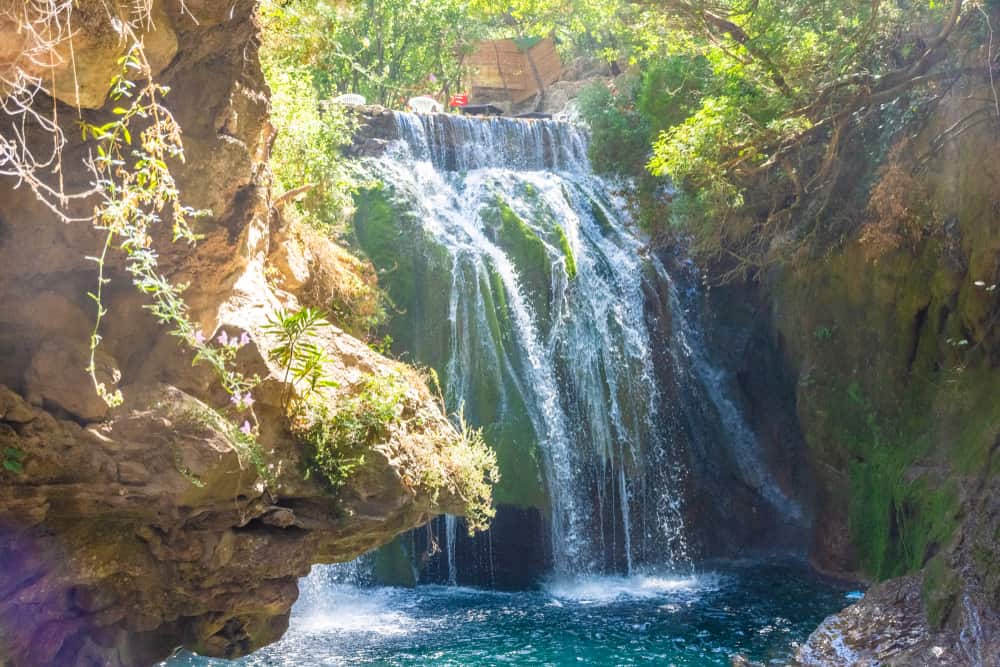
Hiking in the Rif Mountains
Chefchaouen is surrounded by the Rif Mountains, making it a perfect destination for hiking enthusiasts. The mountains offer various trails, ranging from easy to challenging, all with stunning views of the surrounding landscapes. Whether you’re looking for a leisurely walk or a more intense hike, there’s something for everyone.
Best Trails for Hiking: One of the most popular trails leads to the Spanish Mosque, located on a hill overlooking the town. The hike takes about 45 minutes to an hour and is not too difficult. Once you reach the top, you’ll be rewarded with breathtaking views of Chefchaouen’s blue-washed buildings and the surrounding mountains. Another great trail takes you deeper into the Rif Mountains, where you can explore the lush forests and enjoy peaceful nature away from the crowds. If you’re up for a challenge, try the Jebel el-Kelaa hike, which takes a few hours and provides panoramic views of the whole region.
Another must-visit destination is the Akchour Waterfalls, located about an hour’s drive from Chefchaouen. The hike to the waterfalls is moderately challenging and takes about 2 to 3 hours, depending on the route you take. Along the way, you’ll pass through lush greenery, cross rivers, and enjoy the beauty of the Rif Mountains. The highlight is reaching the stunning waterfall, where you can cool off in the crystal-clear pools.
Tips for Outdoor Enthusiasts: When hiking in Chefchaouen, it’s important to wear sturdy shoes and bring plenty of water, especially in the hotter months. Morning and late afternoon hikes are the best times to avoid the midday sun. If you’re unfamiliar with the area, consider hiring a local guide who can show you the best routes and provide insights into the local environment.
Visit the Kasbah Museum
In the heart of Chefchaouen’s medina lies the Kasbah, a 15th-century fortress that has been restored and transformed into a museum. The Kasbah Museum is a must-see for history buffs and those interested in learning more about the town’s rich cultural heritage.
History of the Kasbah: Built by Moulay Ali Ben Rachid, the Kasbah was originally constructed to defend the town against Portuguese invaders. Over the centuries, it has played a key role in the protection and development of Chefchaouen. Today, the Kasbah has been carefully restored and houses a museum dedicated to the history of the region.
What to Expect at the Museum: Inside the museum, you’ll find exhibits showcasing traditional clothing, pottery, and local art. The museum also offers insights into the Andalusian influences that have shaped Chefchaouen’s architecture and culture. One of the highlights of visiting the Kasbah is climbing the fortress towers, which offer incredible views of the Plaza Uta el-Hammam and the surrounding town. In addition to the exhibits, the Kasbah’s beautifully maintained gardens provide a peaceful place to relax and enjoy the scenery.
Shopping in the Medina
The bustling medina of Chefchaouen is a shopper’s paradise, filled with colorful stalls and small shops selling a wide variety of handmade goods. From traditional handicrafts to local souvenirs, there’s something for everyone.
Handicrafts and Souvenirs: Chefchaouen is known for its handwoven textiles, including blankets, rugs, and clothing. These items are made using traditional methods that have been passed down through generations. You’ll also find beautifully crafted leather goods, such as bags, belts, and shoes, made from high-quality Moroccan leather. Other popular items include ceramics, pottery, and jewelry, all of which reflect the region’s unique artistic style.
Where to Find Authentic Items: For the best shopping experience, it’s important to take your time and explore the various shops in the medina. While some stalls cater to tourists, there are many hidden gems where you can find authentic, handmade products. Be sure to ask shopkeepers about the origin of the items they sell. Visiting smaller workshops, where artisans create their crafts, is also a great way to ensure you’re buying authentic goods.
Bargaining Tips and Tricks: Bargaining is a common practice in Moroccan markets, and the medina in Chefchaouen is no exception. When shopping, it’s perfectly acceptable to negotiate prices, but always do so politely. Start by offering about half of the asking price and work your way up from there. Bargaining is meant to be friendly and fun, so don’t be afraid to engage in a little back-and-forth with the shopkeepers.
Sampling Local Cuisine
Chefchaouen’s food scene is as vibrant and colorful as its streets. The town’s restaurants and street food stalls offer a taste of traditional Moroccan cuisine, using fresh, local ingredients and time-honored recipes.
Must-Try Dishes: One of the most famous Moroccan dishes is tagine, a slow-cooked stew made with meat (usually chicken or lamb), vegetables, and a blend of spices. The dish is named after the clay pot it’s cooked in, which helps lock in the flavors. Couscous is another staple, often served with vegetables and meat. It’s a light, fluffy dish that’s perfect for pairing with other Moroccan specialties. For a quick snack, try bissara, a thick fava bean soup that’s simple yet hearty.
Popular Restaurants and Street Food Options: Chefchaouen is home to a variety of eateries, from casual street food stalls to sit-down restaurants with rooftop terraces. The main square, Plaza Uta el-Hammam, is a great place to start your culinary journey. Many of the cafés and restaurants in this area offer both Moroccan and international dishes, but for a more authentic experience, seek out smaller, family-run establishments. Some of the best food can be found at local street food stalls, where you can try dishes like msemen (Moroccan pancakes) or grilled meats.
Rooftop Dining: One of the best ways to enjoy a meal in Chefchaouen is on a rooftop terrace. Many restaurants offer stunning views of the town and the surrounding mountains, making for a memorable dining experience. Whether you’re having breakfast, lunch, or dinner, rooftop dining allows you to take in the beauty of Chefchaouen while enjoying the delicious flavors of Moroccan cuisine.
Day Trips from Chefchaouen
While Chefchaouen is an incredible destination in itself, its location in the Rif Mountains makes it an excellent base for exploring nearby natural wonders and cultural spots. These day trips offer a chance to see a different side of northern Morocco, from scenic landscapes to historic towns. Here are some of the best day trips you can take from Chefchaouen.
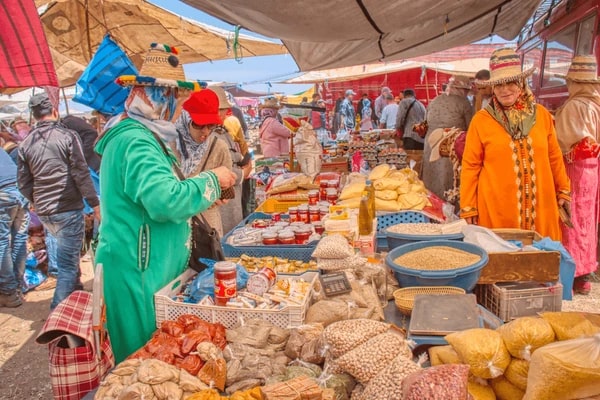
1. Tetouan – A Blend of Cultures
Located about an hour and a half from Chefchaouen, Tetouan is a city rich in history and culture, known for its blend of Andalusian, Arab, and Berber influences. This UNESCO World Heritage city is the perfect destination for those interested in exploring Moroccan history and architecture.
Visit the Medina of Tetouan:
The medina of Tetouan is one of the most intact in Morocco and offers a more authentic and less touristy experience compared to the medinas of larger cities like Marrakech or Fez. As you walk through its narrow streets, you’ll encounter artisans working on traditional crafts, such as woodworking, leather goods, and intricate tile mosaics.
Explore the Archaeological Museum:
Tetouan’s Archaeological Museum is home to a vast collection of Roman and Islamic artifacts, many of which were unearthed from the surrounding region. The museum is a great place to learn about Morocco’s ancient history and its connection to other Mediterranean civilizations.
Rooftop Views of Tetouan:
One of the best things to do in Tetouan is to climb to a rooftop café and enjoy panoramic views of the city and the surrounding mountains. This is an ideal spot to relax with a cup of Moroccan mint tea and take in the beauty of the town.
2. Oued Laou – A Quiet Beach Escape
For those looking to escape the mountains for a day by the sea, Oued Laou is a quiet beach town located about two hours from Chefchaouen. The journey to Oued Laou takes you through beautiful mountain roads before arriving at the Mediterranean coast.
Unwind on the Beach:
Oued Laou’s beach is known for its calm, clear waters and long stretches of golden sand. It’s a perfect spot for those looking to relax away from the more crowded beaches in Morocco’s larger coastal cities. Whether you want to swim, sunbathe, or simply enjoy a peaceful stroll along the shore, Oued Laou offers a tranquil setting.
Sample Fresh Seafood:
Oued Laou is known for its seafood, and the town’s restaurants offer a wide variety of freshly caught fish and shellfish. Dining in one of the beachside cafés with a plate of grilled fish and a view of the Mediterranean is a must when visiting this coastal gem.
Local Markets:
On Saturdays, Oued Laou hosts a traditional market where you can find local produce, crafts, and other goods. This is a great place to pick up a few souvenirs or experience the local culture in a relaxed, seaside environment.
3. Jebel Kelti – A Challenging Hike for Adventure Lovers
For the more adventurous traveler, a hike up Jebel Kelti, one of the tallest peaks in the Rif Mountains, offers a challenging but rewarding experience. Located about an hour from Chefchaouen, the hike is strenuous but provides breathtaking views of the surrounding valleys, villages, and distant coastlines.
Hiking the Summit:
The trail to the summit of Jebel Kelti is steep and can take several hours to complete, depending on your pace. While the hike is demanding, it’s worth it for the panoramic views you’ll enjoy from the top. On a clear day, you can see the Mediterranean Sea and even the distant shores of Spain.
Wildlife and Flora:
Along the trail, you’ll encounter a variety of local wildlife, including birds and mountain goats. The region is also home to unique plant species, making it an interesting destination for nature enthusiasts.
Local Guides:
It’s recommended to hire a local guide for the hike, as the trail can be difficult to navigate for first-timers. A guide will not only help ensure your safety but also provide interesting insights into the landscape, flora, and fauna of the region.
4. Talassemtane National Park – A Nature Lover’s Paradise
Just a short drive from Chefchaouen, Talassemtane National Park is a protected area that offers some of the most spectacular natural scenery in northern Morocco. It’s a must-visit for nature lovers, with plenty of opportunities for hiking, birdwatching, and photography.
Cedar and Fir Forests:
The park is home to ancient cedar and fir forests, which are unique to this region of the Rif Mountains. These towering trees provide a cool, shaded environment that contrasts beautifully with the surrounding rocky cliffs and valleys.
Waterfalls and Gorges:
Within the park, you’ll find several hidden waterfalls and gorges, perfect for a peaceful day of exploration. The park’s natural beauty is best appreciated on foot, with numerous trails available for hikers of all levels. Some of the park’s waterfalls can only be reached by foot, so pack a lunch and enjoy a scenic picnic surrounded by nature.
Birdwatching:
Talassemtane is also a haven for birdwatchers, as it’s home to several species of rare and migratory birds. Bring binoculars and a camera to capture some of the park’s feathered residents in their natural habitat.
5. Al Hoceima National Park – Coastal Adventures
For travelers interested in combining hiking with coastal views, a day trip to Al Hoceima National Park offers a unique blend of mountain and sea. Located about three hours from Chefchaouen, this coastal park offers stunning cliffs, hidden coves, and pristine beaches along the Mediterranean coastline.
Coastal Hiking:
The park’s rugged cliffs provide excellent hiking opportunities, with trails that wind along the coast, offering sweeping views of the Mediterranean Sea. The trails are less crowded than those in Chefchaouen, making for a peaceful day of outdoor exploration.
Hidden Beaches:
Al Hoceima National Park is dotted with secluded beaches that are perfect for a quiet day by the sea. Some beaches are accessible only by boat or via short hikes, making them a hidden paradise for those willing to venture off the beaten path.
Marine Life:
The park is known for its rich marine biodiversity, making it a great spot for snorkeling and diving. You can observe a variety of marine species, including fish, octopuses, and colorful corals.
6. Bab Taza – A Taste of Rural Life
For a glimpse into rural Moroccan life, a visit to Bab Taza, a small village located about 30 minutes from Chefchaouen, is a must. This peaceful village offers an authentic experience of traditional Moroccan agriculture and hospitality.
Farm Tours:
Many families in Bab Taza still practice traditional farming methods, growing crops such as olives, figs, and almonds. Some farms offer tours, where you can learn about the local agricultural practices, sample fresh produce, and even participate in farm activities.
Village Life:
Walking through Bab Taza’s narrow streets, you’ll experience the slower pace of life that defines rural Morocco. The village is a great place to engage with locals, enjoy a traditional Moroccan meal, and gain insight into life in the Rif Mountains.
Weekly Souk:
Bab Taza hosts a weekly souk (market), where villagers gather to trade goods such as fresh produce, livestock, and handmade crafts. Visiting the souk offers a glimpse into the traditional commerce that still thrives in rural Morocco.
Summary of Day Trips from Chefchaouen
- Tetouan: Explore a UNESCO World Heritage Medina and learn about the city’s rich history.
- Oued Laou: Relax by the Mediterranean Sea in a quiet beach town.
- Jebel Kelti: Challenge yourself with a hike to one of the tallest peaks in the Rif Mountains.
- Talassemtane National Park: Discover cedar forests, waterfalls, and wildlife in this protected nature reserve.
- Al Hoceima National Park: Enjoy coastal hikes and secluded beaches along the Mediterranean coast.
- Bab Taza: Experience traditional rural life and agriculture in a small mountain village.
Conclusion
Chefchaouen is more than just its iconic blue streets—it’s a gateway to rich culture, breathtaking nature, and authentic Moroccan experiences. From the peaceful medina to the stunning views of the Rif Mountains, the town offers a unique blend of relaxation and adventure. Whether you spend your days exploring the local markets, enjoying traditional cuisine, or wandering the winding alleys, Chefchaouen provides a perfect escape from the busier cities of Morocco.
The surrounding region enhances your experience with a variety of day trips that allow you to delve deeper into Morocco’s history and natural beauty. Whether you’re hiking through national parks, lounging by the Mediterranean Sea, or visiting traditional villages, these excursions offer a glimpse into the diverse landscapes and cultures that define northern Morocco. Each day trip presents its own unique attractions, ensuring there’s something for every type of traveler.
Ultimately, Chefchaouen is a destination that invites you to slow down and immerse yourself in its serene atmosphere. Whether you’re drawn by the vibrant culture, stunning scenery, or the welcoming spirit of the locals, your time in Chefchaouen will be filled with memorable experiences. From the town’s tranquil charm to the adventures awaiting just beyond its borders, Chefchaouen truly offers a one-of-a-kind Moroccan journey.
Frequently Asked Questions (FAQ)
Best time of year to visit Chefchaouen?
Spring and fall are ideal times to visit, offering pleasant weather and fewer tourists. Summer is warmer and busier, while winter is quieter and cooler.
Is Chefchaouen safe for solo travelers?
Yes, Chefchaouen is considered safe for solo travelers. It’s a welcoming town, and many locals speak basic English, making it easy to get around.
What to pack for Chefchaouen?
Pack comfortable walking shoes, as the medina is hilly with cobblestone streets. If visiting in winter, bring a warm jacket for the cooler evenings. In summer, light clothing and sunscreen are essential.
How many days are ideal for visiting Chefchaouen?
Two to three days is enough to explore the town, hike in the surrounding mountains, and enjoy a relaxing stay.
